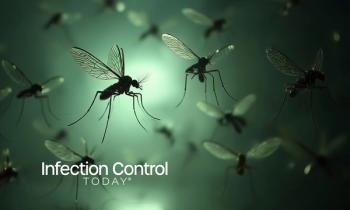
ASA Launches National Perioperative Surgical Home Learning Collaborative
The American Society of Anesthesiologists (ASA) announces the launch of its ASA Perioperative Surgical Home (PSH) Learning Collaborative, a national initiative designed to improve the patient experience before, during and after surgery. More than 40 leading health care organizations from across the country will participate in the collaborative, which will convene for the first time at the ASA’s PSH Learning Collaborative Launch, July 25-26, 2014 in Schaumburg, Ill.
The PSH collaborative participants will create a network where interested organizations can learn from each other and from recognized experts. Working together, these healthcare facilities will proactively pursue care redesign strategies to enhance the patient’s experience of surgical and procedural care, improve quality and outcomes, and reduce costs. The long-term goal is to create an evidence-based “road map” for healthcare organizations to spread knowledge and best practices of the PSH model.
“The collaborative brings together healthcare organizations to define, develop, pilot and evaluate the PSH model to improve care for patients undergoing surgeries or procedures from planning, through recovery, discharge and beyond,” says ASA president Jane C.K. Fitch, MD. “From academic and non-profit institutions to hospitals and medical centers, we are excited to launch this innovative project with such a diverse group of the nation’s top health care organizations.”
Currently, preoperative, intraoperative, postoperative and post-discharge are treated as discrete episodes of care. In many instances, care is neither integrated nor coordinated between clinical microsystems, potentially compromising quality and safety for the patient.
The PSH is a patient-centered, multidisciplinary, physician-led, team-based model of coordinated care that guides the patient throughout the entire surgical or procedural experience. With the PSH model, the perioperative episode is fully coordinated as one continuum of care.
Ultimately, the PSH can improve outcomes and the quality and safety of care, enhance the patient’s experience and reduce costs by eliminating cancellations and delays in surgery, lowering complication rates and readmissions, and reducing length of stays.
In fact, preliminary findings from the PSH model at the University of California Irvine and the University of Alabama found improved patient outcomes and efficiencies in their PSH programs.
The ASA PSH learning collaborative participants include:
• Advocate Lutheran General (Park Ridge, Ill.)
• American Anesthesiology of the Carolinas (Wilmington, N.C.)
• American Anesthesiology of New York (Mount Kisco, N.Y.)
• American Anesthesiology of Tennessee (Chattanooga, Tenn.)
• Austin Anesthesiology Group (Austin, Texas)
• Boston Children’s Hospital (Boston)
• Carroll Hospital Center - Westminster, MD
• Children’s National Medical Center (Washington, DC)
• Englewood Hospital/Team Health (Englewood, N.J.)
• Fairfax Anesthesiology Associates (Fairfax, Va.)
• Florida Hospital (Orlando, Fla.)
• Keck Medical Center of USC (Los Angeles)
• Legacy Good Samaritan/Team Health (Portland, Ore.)
• Loma Linda (Loma Linda, Calif.)
• Maine Medical Center (Portland, Maine)
• Martin Health System/Team Health (Stuart, Fla.)
• Mayo Clinic (Rochester, Minn.)
• Memorial Hermann Anesthesia Group (Houston)
• Meritage ACO/Marin General Hospital (Novato, Calif.)
• Minnesota Health (Minneapolis)
• NYU Langone Medical Center (New York)
• Ohio State University Wexner Medical Center (Columbus, Ohio)
• Physician’s Anesthesia Service (Seattle)
• Redmond Hospital/Team Health (Rome, Ga.)
• St. Barnabas (Livingston, N.J.)
• St. Charles (Bend, Ore.)
• St. Francis Health Center/Team Health (Topeka, Kan.)
• Stanford (Stanford, Calif.)
• Tampa General Hospital (Tampa, Fla.)
• The University Hospital/Rutgers New Jersey Medical School (Newark, N.J.)
• University of California, Los Angeles (Los Angeles)
• University of California, San Francisco (San Francisco)
• University Hospital Case Reserve (Cleveland)
• University of California, Irvine (Orange, Calif.)
• University of Florida/Jacksonville (Jacksonville, Fla.)
• University of Illinois (Chicago)
• University of Kansas (Kansas City, Kan.)
• VCU Medical Center (Richmond, Va.)
• Wheaton Franciscan All Saints/Team Health (Racine, Wis.)
• White River Medical Center (Batesville, Ark.)
• William Backus Hospital (Norwich, Conn.)
Additional healthcare organizations are expected to join the collaborative in the future.
Source: American Society of Anesthesiologists (ASA)
Newsletter
Stay prepared and protected with Infection Control Today's newsletter, delivering essential updates, best practices, and expert insights for infection preventionists.





